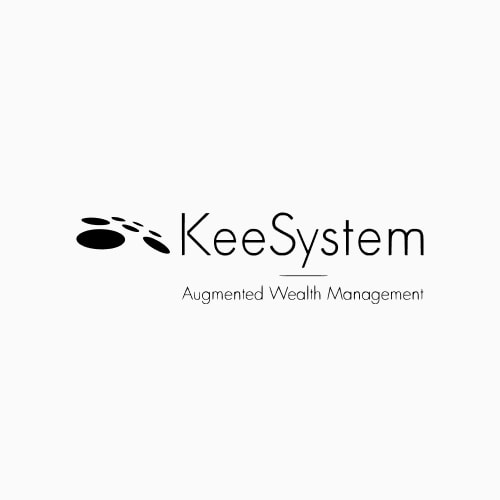The cost of compliance is a critical component of portfolio management. Management companies need to understand the expenses associated with compliance to be able to effectively manage their finances. If not properly managed, compliance costs can have a significant impact on profitability.
The cost of compliance in portfolio management
Compliance costs are a major concern for asset management professionals in the wake of increased regulatory scrutiny and growing investor demand for transparency. Compliance costs in portfolio management can take many forms:
Licenses to practice
Any person operating as a professional asset manager must obtain a license from the national financial activities regulator and meet criteria regarding its financial situation, personnel and organisation.
This license, and its associated fee, are an unavoidable cost for management companies.
Regulatory fees
Regulatory fees vary by jurisdiction and type of activity. For example, in Luxembourg, the Commission de Surveillance du Secteur Financier (CSSF) charges fees for various regulatory activities related to the supervision of financial institutions, including the approval of new financial products, the review of compliance with regulations and the authorisation of new companies. When operating in these jurisdictions, these fees are compulsory.
Legal fees
Asset management firms routinely use legal counsel to assist them with complex regulatory requirements regarding matters such as data protection laws, anti-money laundering regulations and securities laws. The cost of such legal advice is high, especially for smaller companies that do not have in-house legal counsel.
In addition, asset management firms file various regulatory reports and comply with ongoing monitoring and disclosure requirements, which results in significant legal costs. These include preparing regulatory filings, responding to regulatory inquiries and complying with regulatory inspections and audits.
Technology costs
Compliance management technology solutions help manage tasks such as monitoring regulatory changes, tracking compliance-related activities, reporting, and ensuring cybersecurity and data protection. These solutions can often call for significant financial investment.
Generally recommended solutions include:
- Compliance management software
- Data analysis and reporting tools
- Cybersecurity and data protection solutions
- Training programs related to these technology solutions
Operating Expenses
Like with any business, there is a cost attached to operations. These expenses include:
- Salaries of compliance staff
- Costs associated with outsourcing compliance activities
- Expenses associated with training staff on compliance policies and procedures.
Asset management companies are also required to provide reports and accounts to demonstrate compliance with regulations and legal requirements.
“According to the Investment News survey mentioned above, regulatory compliance spending averages 6.3% of total revenue for asset management firms, with the largest firms spending even more.”
The hidden costs of compliance
Amongst the hidden costs of compliance, the risk of compliance errors leading to fines is one of the most significant. In recent years, regulators have placed greater emphasis on identifying and penalising non-compliant companies, resulting in increased fines and penalties.
For example, in 2020, the U.K. Financial Conduct Authority (FCA) fined companies a total of £224 million ($309 million) for non-compliance with various regulations.
In addition, compliance errors present a significant reputational risk to the management company, which may result in the loss of clients and possible legal action.
In 2019, the Swiss Financial Market Supervisory Authority (FINMA) fined various banks and financial institutions more than 174 million Swiss francs ($189 million) for non-compliance with anti-money laundering regulations. These fines demonstrate the potential financial impact of compliance errors in the wealth management industry.
The role of digitalisation and automation in reducing compliance costs
Compliance processes and procedures are time-consuming and costly, as they are traditionally performed manually. Digitisation and automation can reduce these costs while increasing efficiency and accuracy.
While KYC and AML checks require manual analysis of large amounts of data, they can be performed quickly and accurately using automated software. Similarly, customer onboarding processes, which involve numerous paper forms and documents, can now be completed electronically, reducing compliance time and costs.
Finally, digital reporting tools allow asset management firms to produce detailed and accurate compliance reports, providing a valuable audit trail that can be used to demonstrate compliance to regulators.
Overcoming the challenges of digitalisation and automation in compliance
“Among small-to-medium-sized asset management firms, nearly 30% are considered digital transformation starters and 56% are in progress” Source: Liferay
While digitisation and automation offer significant benefits to wealth management firms, the implementation of these technologies to compliance – or more broadly to the firm’s entire business – is proving complex on the ground.
The main challenges are both technical and non-technical. They most often concern the following:
- The need to integrate different data sources to ensure data accuracy and address data privacy and security concerns. A preliminary study identifying the different sources and workflows required is recommended. This study can be part of the services offered by the software vendor.
- With the digitisation and automation of compliance, asset management firms may fear a loss of identity and “personality” in their interactions with their clients. To overcome this potential problem, it is necessary to formalise workflows and desired personalisation to ensure that they can be implemented or adapted to the technology solutions being considered.
- Integrating new digital tools and platforms with existing systems can be difficult and time-consuming. Choosing a solution that allows you to connect to other tools, with a secure API, is a way to overcome this problem and avoid using and paying for functionality already offered by existing tools.
When taking these real and hidden costs into account, compliance automation is a strong lever for optimising profitability and minimising operational risk. The challenge lies in choosing a solid and reliable technology partner capable of accompanying the asset management company in its digital transition.
About KeeSystem is a family office software provider
KeeSystem is a family office software provider and with its automated portfolio management solution KeeSense, KeeSystem has been supporting wealth management professionals since 2009 in digitalising their activities, while preserving their identity and image.



